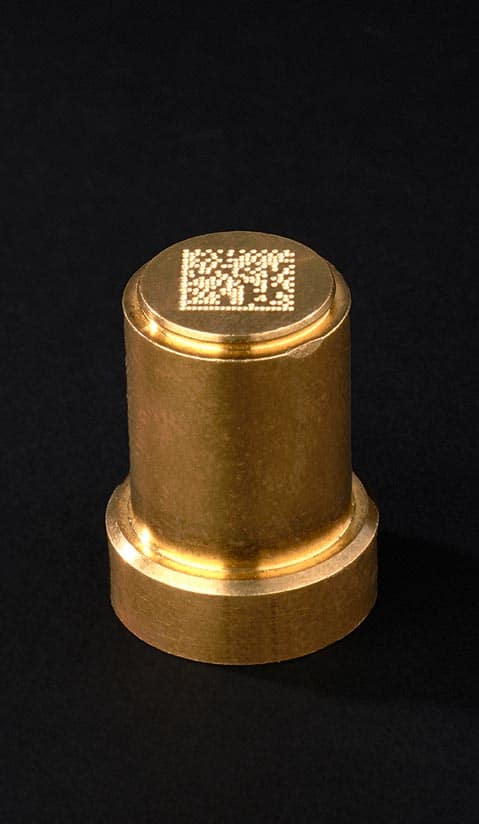Brass characteristics
Industrial marking on brass parts
Brass is an alloy of copper and zinc, also known as yellow copper. It has a number of interesting properties that make it a popular material for many industrial applications.
First of all, brass is easy to work with. It is malleable, which means it can be easily shaped, drilled, turned, soldered and, of course, branded. It’s also corrosion-resistant, which means it doesn’t rust easily, making it ideal for outdoor or wet applications.
Furthermore, brass is a good electrical and thermal conductor. It is therefore often used for electronic components, connectors and switches. It is also used for piping, valves, locks and mechanical parts because of its resistance to wear.
In short, brass is often used for industrial parts requiring corrosion resistance, good electrical or thermal conductivity, machinability or an aesthetic finish. It is used in a wide variety of industries, including electronics, mechanics, aeronautics, automotive and shipbuilding.





